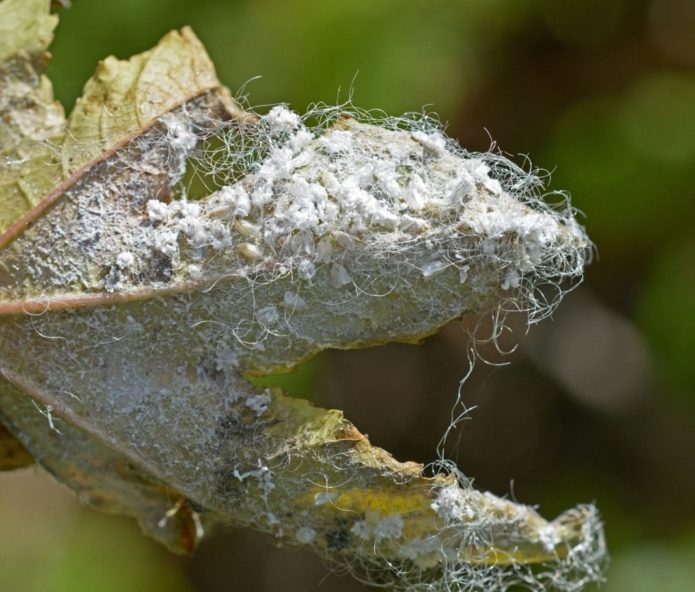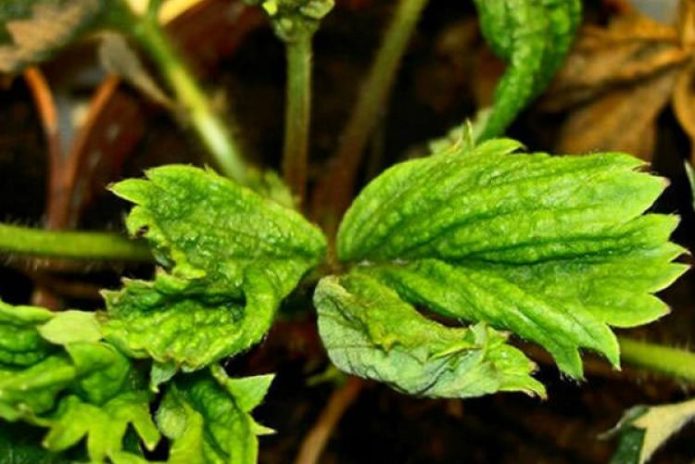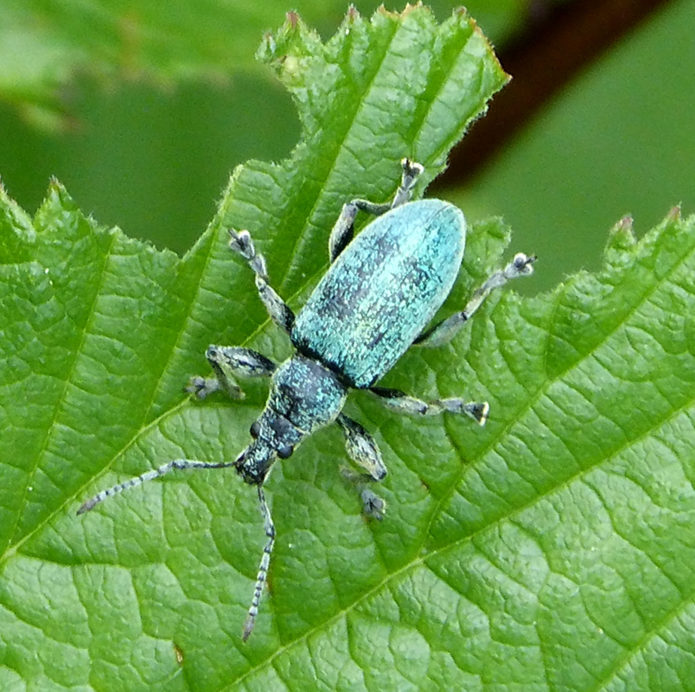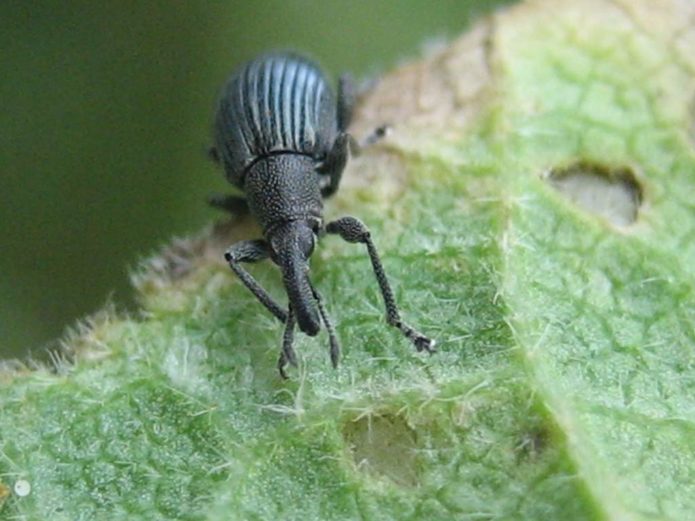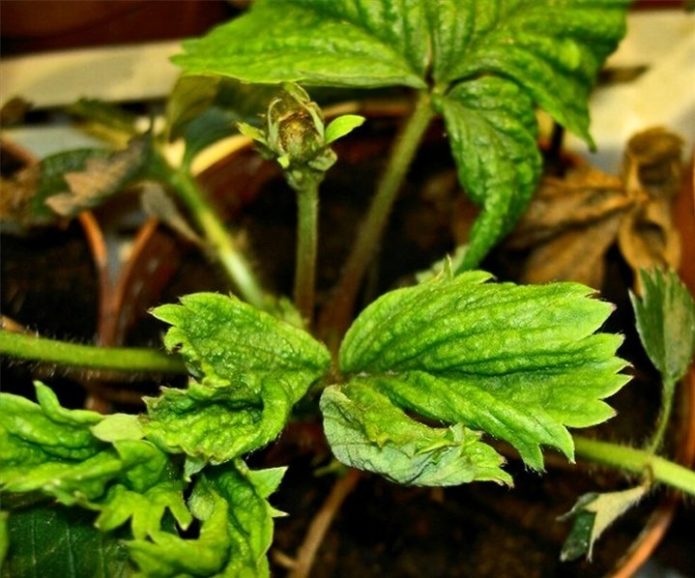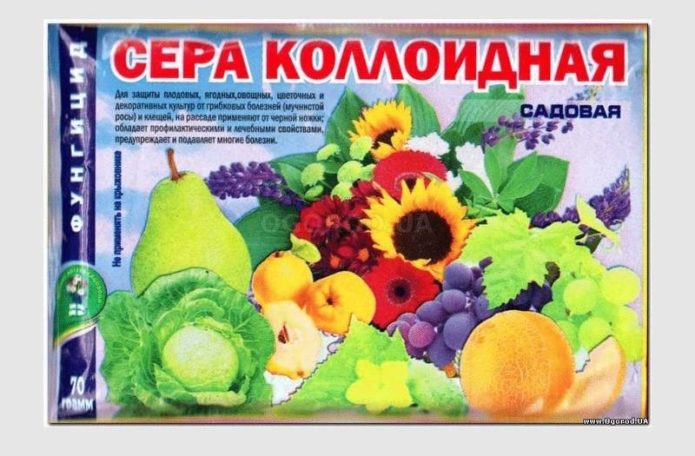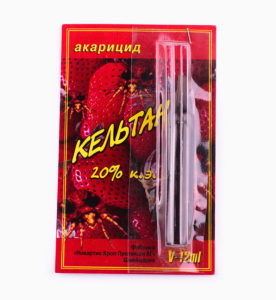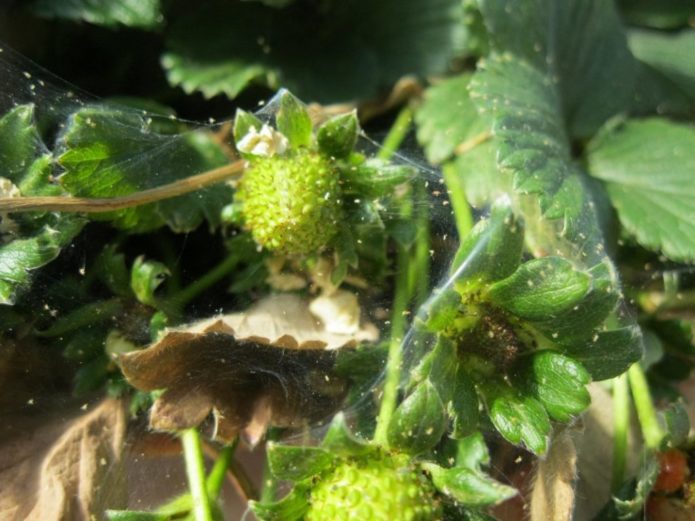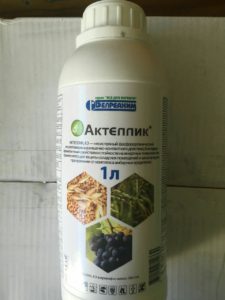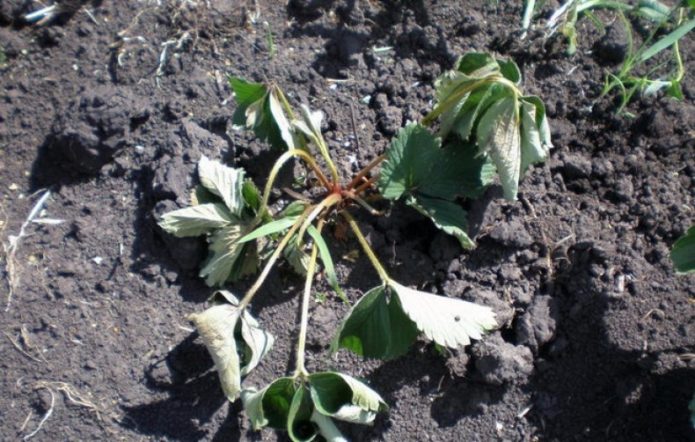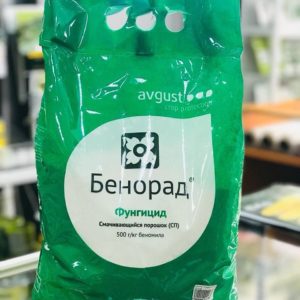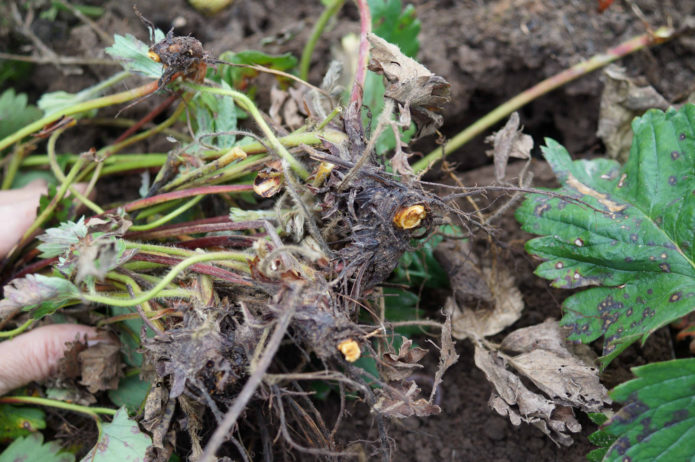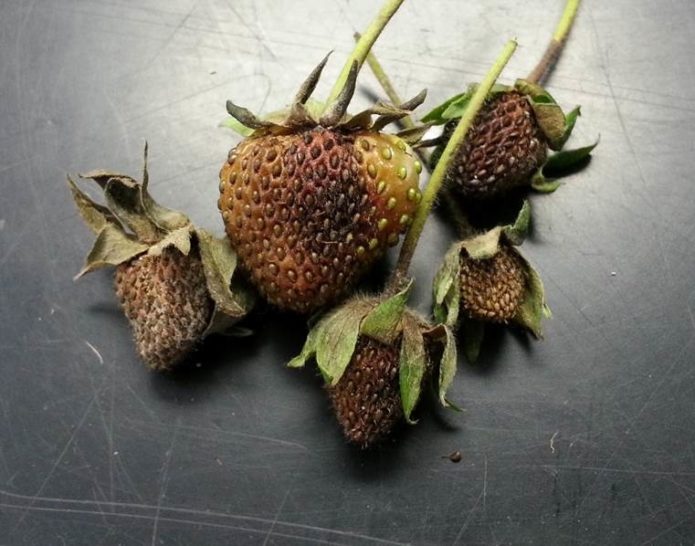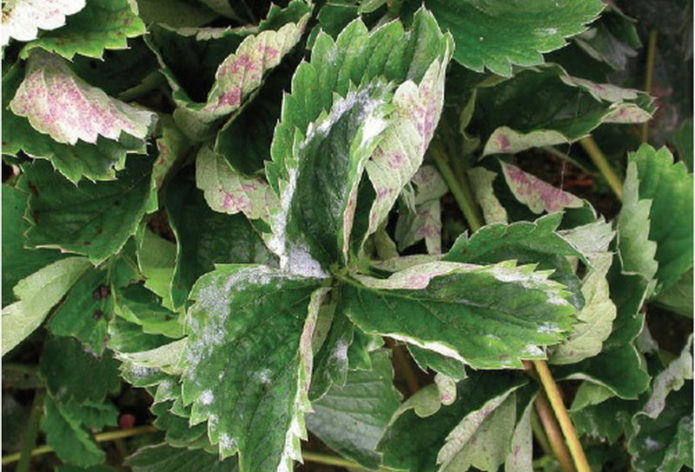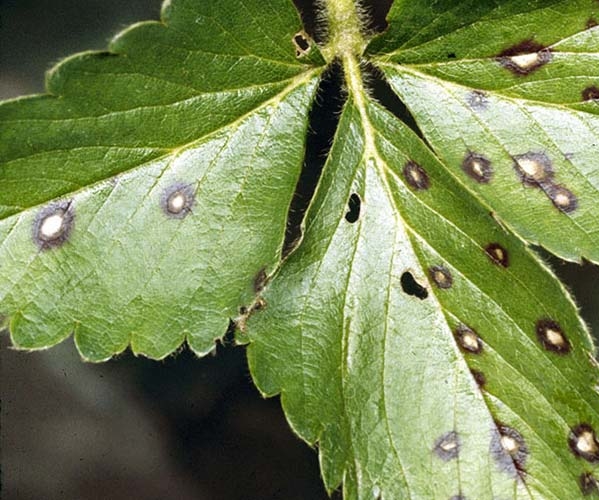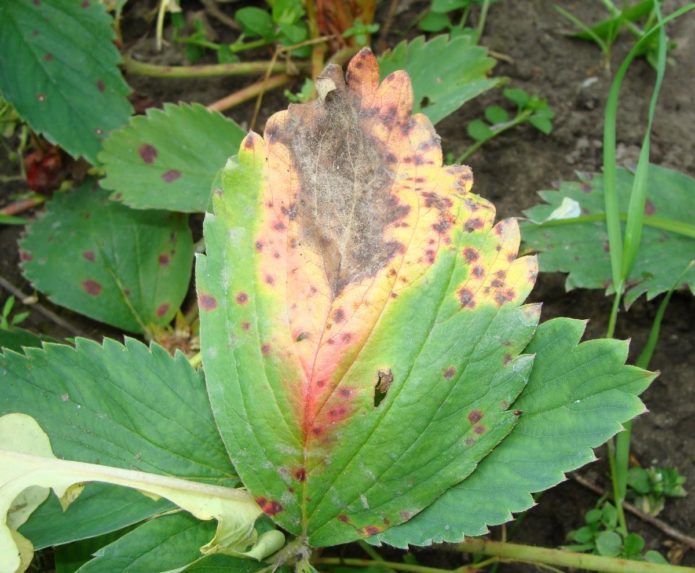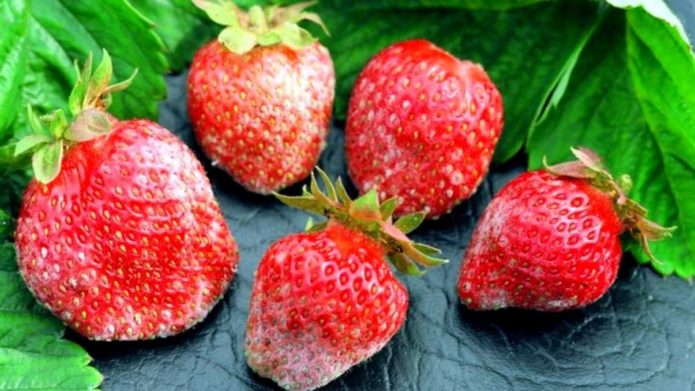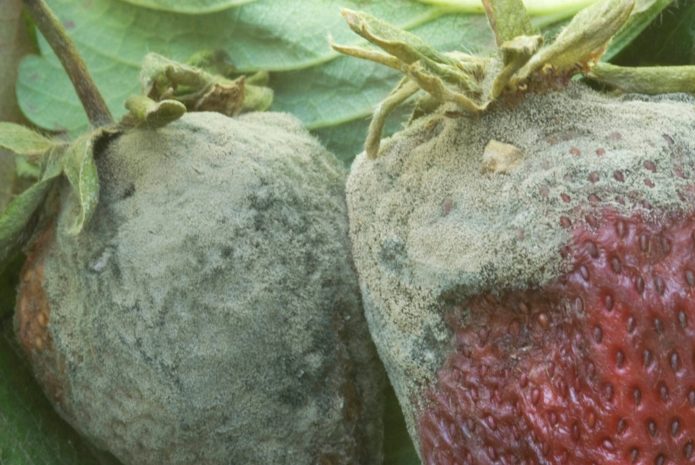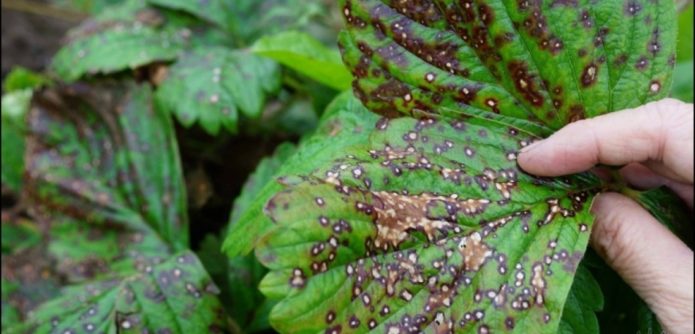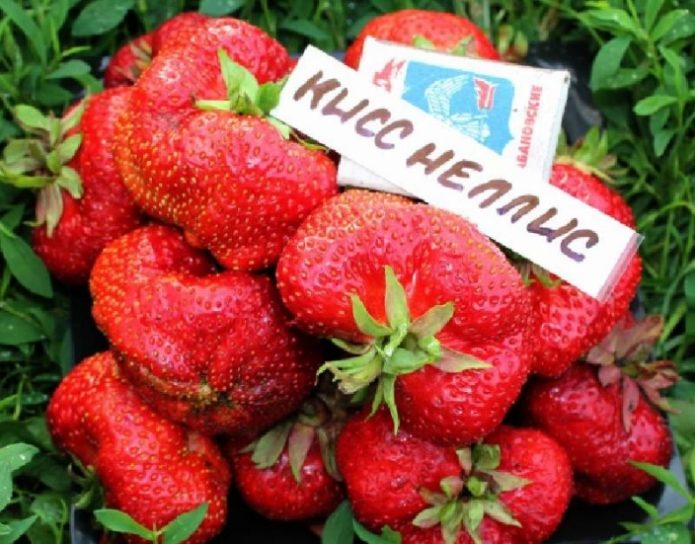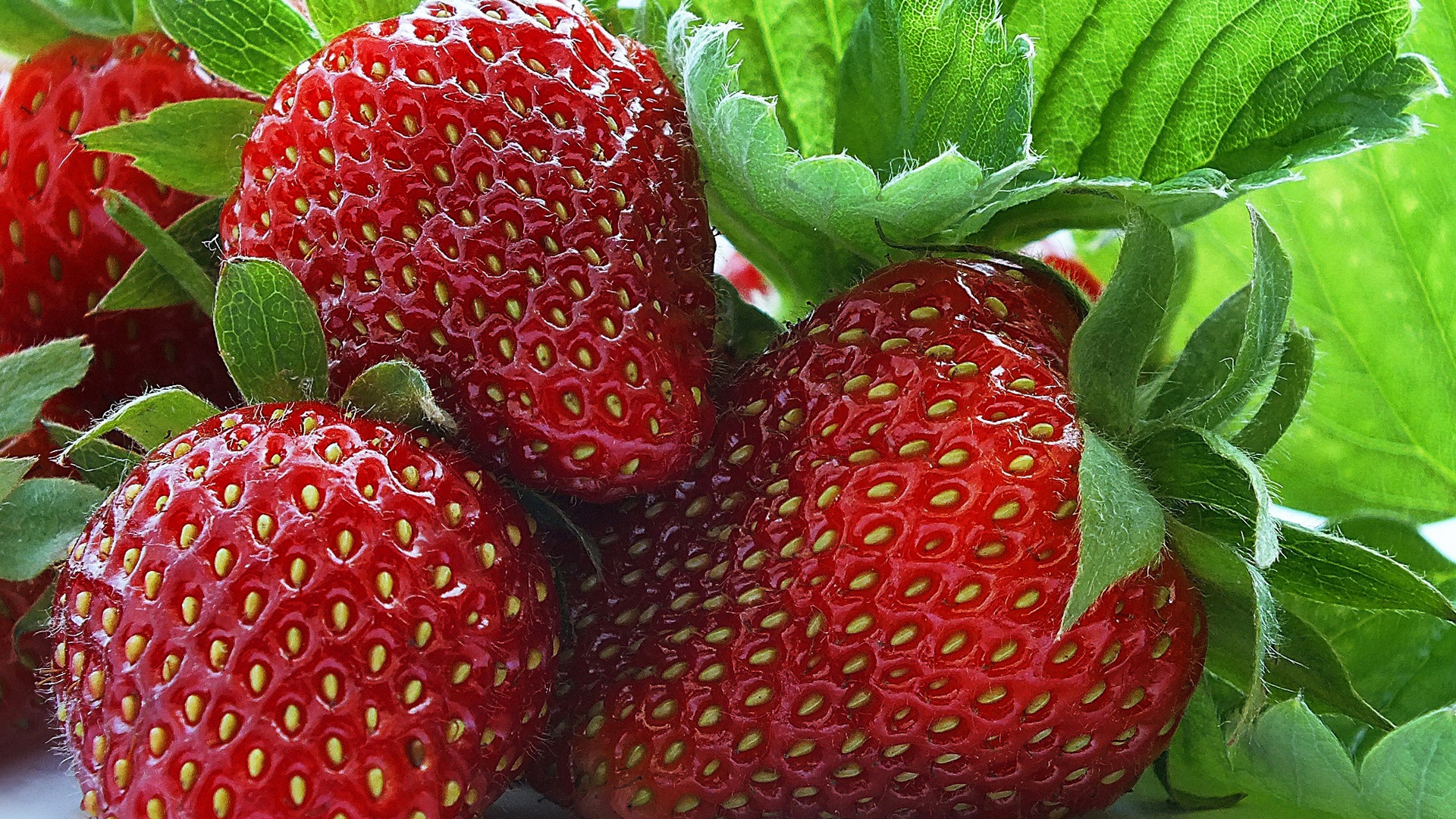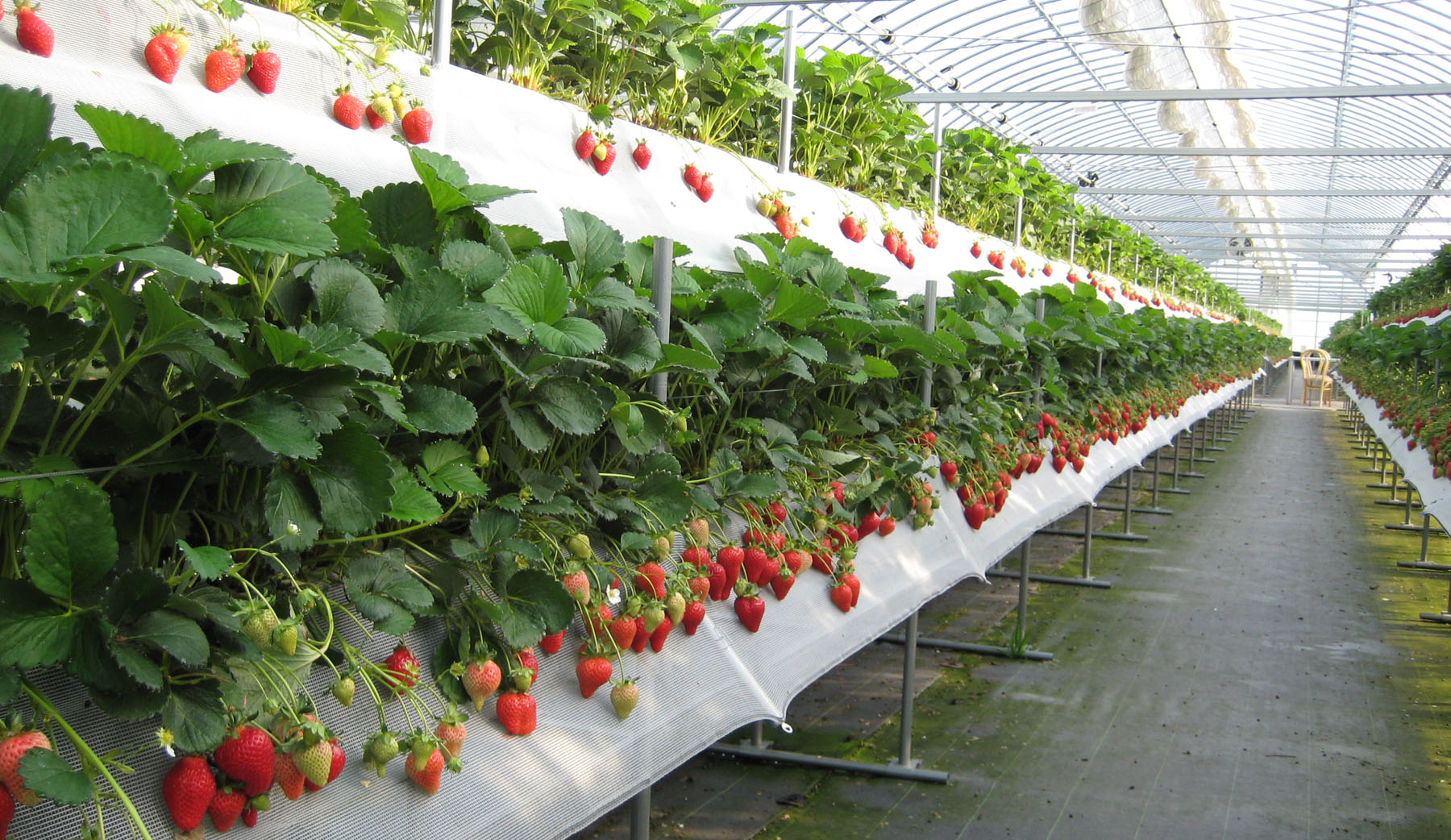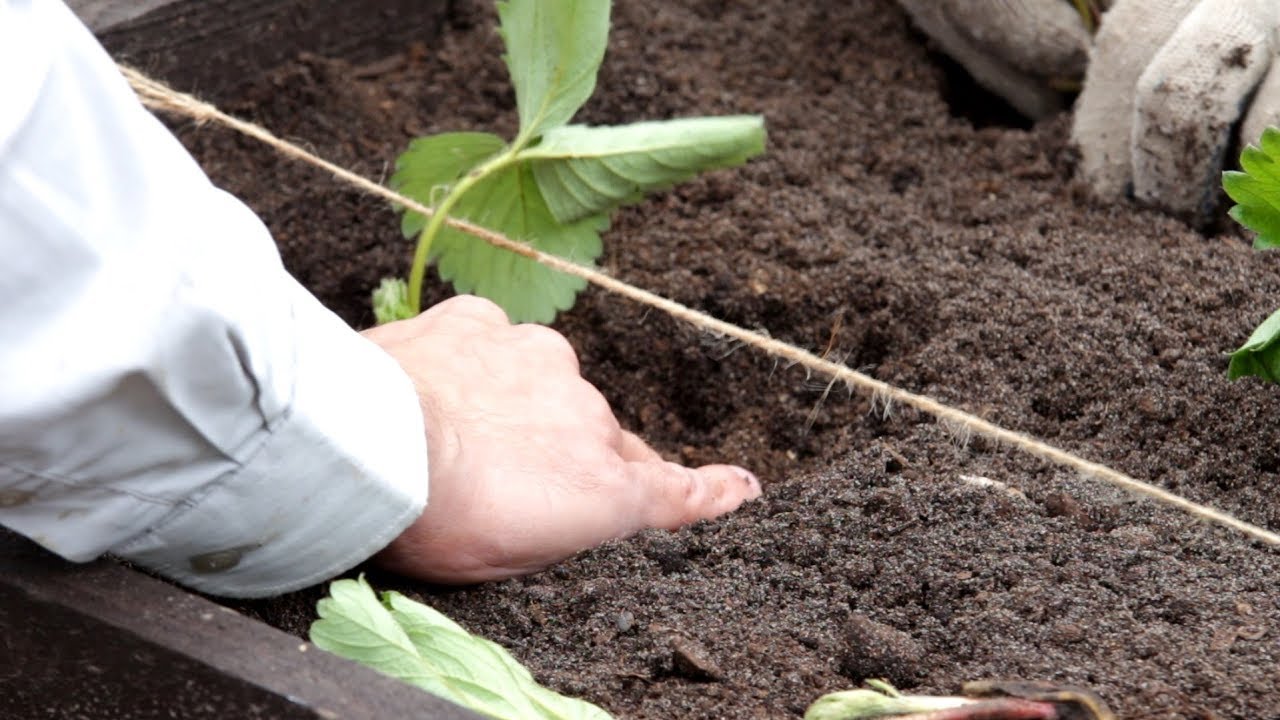Growing strawberries requires attention and care, as they are prone to various diseases. In some cases, treatment is impossible and then you have to destroy the affected bushes with whole beds. Irreparable damage can be caused not only by diseases, but also by pests of strawberries. Therefore, when the first symptoms occur, the necessary measures should be taken.
Content
Common pests
Most often, strawberries like to attack nematodes, whiteflies and weevils.
Strawberry whitefly
It is a small white butterfly less than 1.5 mm in size. She prefers to be at the bottom of the leaves, sucking the juice out of them. The insect does not like sunlight, so it settles in shaded areas. The whitefly lays its eggs on the underside of the leaves.
Some of the best drugs among experienced gardeners are:
- Aktara is a universal compound that destroys a large number of insects;
- Actellik is an effective remedy, the effect of which is noticeable 3 days after the start of use;
- Rovikurt is an oily liquid that is used for mass whitefly infection.
Its natural enemies are effective against the pest: encarsia or macrolophus bugs. Having destroyed the eggs of the whitefly, they leave the garden. You can buy them in biolabs or large garden stores.
Another effective biological agent is Verticillin Zh (100-500 ml of the drug per 10 liters of water).
Strawberry nematode
At the beginning of spring, the first strawberry leaves that have just appeared become twisted, the cuttings are deformed. The plant becomes fragile and brittle. Irregularly shaped berries are formed. The harmfulness of the strawberry nematode is extremely high - the yield level can drop by half.
Therefore, for planting, you need to use uninfected seedlings. As a preventive measure, before planting, the roots of the seedlings are soaked in hot water (about 45-50 ° C) for about 10 minutes, and then cooled in water for the same amount of time.
If symptoms of infection are found in strawberries, diseased plants are destroyed, and the soil is treated with a 5% solution of ferrous sulfate. The affected bushes should be removed from the ground and burned.
They help in the fight against a pest of plants with a specific odor that repels insects:
- marigold;
- large nasturtium;
- calendula medicinal;
- Gaillardia is beautiful;
- Drummond coreopsis.
Spraying plants with nematicides is also recommended. The most effective drugs include Lindane (Ruskamin), Mercaptophos, Phosphamtide.
Nettle weevil
This insect is slightly more than a centimeter long, bright green in color with a small proboscis. It eats the strawberry leaves in smooth patches. Damaged leaves make the strawberry less attractive, but the bush remains healthy.The larvae of the pest hibernate in the soil, and in the spring they begin to damage the roots of the plant.
As a preventive measure, it is recommended to grow strawberries in one place for no more than 4 years. The soil must be loosened at least twice - during the budding period and after collecting all the berries. Before flowering, the bushes are treated with 50% Karbofos emulsion (25–30 g per 10 l of water).
During the budding period, plants can be sprayed with self-prepared solutions:
- Dilute 10 g of mustard in powder in 3 liters of warm water;
- Grate 40 g of laundry soap on a fine grater and dilute in 10 liters of water;
- Dilute 2.5-3 kg of wood ash in 10 liters of water;
- Dissolve 5 g of potassium permanganate in 10 liters of water.
Raspberry and strawberry weevil
It is a grayish-black insect 2–3 mm long. The weevil spends the winter under clumps of earth or old leaves. In the spring, he gnaws the leaves of strawberries in small holes. On the beds, there are bushes, which seem to have cut off the buds. There are also buds hanging on a string.
Not later than 5–6 days before the beginning of flowering, when the bud has moved out and stood out, it is recommended to treat the bushes with 0.3% Karbofos emulsion 50% (30 g per 10 l of water). It is better to destroy the remains of affected plants, loosen the ground between the rows.
To scare away an insect, it is recommended to plant garlic next to strawberries (1 onion per 4 bushes). After the appearance of inflorescences in strawberries, rub or trim the leaves of garlic every day to release into the air repellent compounds that scare off the weevil.
Strawberry mite
It is a dangerous pest, since the strawberry mite feeds on juice from the leaves. They become shriveled and oily, and the berries become smaller.
Severely affected bushes cannot be saved. To prevent the occurrence of strawberry mites, you should be careful about the planting material. The bushes are kept in hot water (about 45 ° C) for 10 minutes before planting, and then washed in cool.
Infected bushes are treated with Colloidal Gray (50-60 g per 10 liters of water), using 1-2 liters of solution per 10 square meters. m. plot. The treatment must be repeated 10 days before flowering.
A good alternative is Keltan (0.2% solution is used at the beginning of leaf growth).
The most effective remedy is to populate the area with strawberries with a predatory mite that feeds on a strawberry fellow.
Spider mite
The first sign of spider mite damage is the appearance of small yellowish-white specks on the surface of the foliage. If the anti-mite treatment is not carried out in time, then the strawberry leaves become entangled in the cobweb, quickly turn yellow and dry out. After a while, the bush dies.
The most effective is the treatment of bushes with a solution of Karbofos (3 tablespoons per 10 liters of water). Spraying is carried out after collecting all the berries. After watering, the area must be covered for 3 hours with foil.
Among other effective drugs, Actellik or Fitoverm are recommended. Spraying is carried out no later than 3 weeks before harvest. To prepare the solution, add 2 ml of the liquid product to 1 liter of water.
Common diseases of strawberries
Strawberries are often affected by fusarium, late blight and various types of rot.
Fusarium wilting
The disease most often occurs in summer, especially when it is too hot. Sources of infestation are weeds, vegetables and fungus-infested soil. The first symptoms of fusarium wilting are dying off along the edge of the leaves and their wilting. Then the petioles and leaves turn brown and die off. A sick bush is pressed to the ground. The plant dies after 6 weeks. Yield losses from this type of wilting can be 30-50%.
For prevention, it is recommended to add lime or potassium oxide to the soil. Also, biological preparations (Agate 23K, Potassium humate) are effective to prevent the disease. They need to process the roots of seedlings before planting. For severe damage, it is recommended to use Fundazol, Horus and Benorad.
Late blight wilting
This is a fungal disease that can get to a summer cottage along with low-quality seedlings, when using infected garden tools, and also appears due to a lack of nutrients in strawberry bushes. The disease is transient and chronic. In the first case, in the spring, the entire bush or only the leaves suddenly withers. The roots die off, and the main cylinder of the root turns brown. In the chronic form in the spring, infected bushes lag behind in development, the leaves turn gray. There are fewer strawberries or no fruiting altogether. Death occurs 2–3 years after infection.
The best remedy for late blight wilt is Nitrafen. But first you need to uproot the plants that will no longer respond to treatment, then cultivate the soil. A good solution would be to use products containing copper (Bordeaux liquid, copper oxychloride, Oxyhom). Bushes must be sprayed at the first suspicion of late blight.
If the disease has strongly affected the bushes, then you can use strong fungicides: Horus, Ridomil, Topaz. They can process bushes until they bloom.
Late blight leathery rot of the root collar, roots and fruits
The disease appears where potatoes and other vegetable crops have been cultivated for a long time. With late blight rot at the beginning of infection, the lower leaves wither and fall on the ground. Brown rings are formed at the base of the petioles. Older leaves become stiffer and the edges curl. If you cut the berry, you can see the darkening, which begins at the stalk.
When a disease occurs, the soil is treated with 2-3% copper sulfate. Infected strawberry bushes will have to be destroyed.
Verticillary wilting
Verticillium wilting is a fungal infection that develops in the soil. If the bush grows on light sandy soil, then death occurs within 3 days, if on loamy soil, then more slowly. Leaves grow slowly and their number decreases. By the end of the growing season, the bush becomes flat. First, the old leaves die, then the whole plant.
To prevent the problem, it is recommended:
- do not keep the bushes in one place for more than 3-4 years, and return to the site not earlier than after 6 years;
- during planting, ensure that the seedlings are healthy;
- choose varieties resistant to wilt;
- destroy the affected plants immediately.
For treatment are used:
- fungicides (Bordeaux liquid, Maxim, Funzadol);
- biological products (Fitodoctor, Fitosporin).
Brown spot
The fungal disease is spread with the help of water; after drying, the fungus is spread by the wind or insects. Brown spot is characterized by the appearance of dark purple spots on the leaves and calyces. After a while, on these spots, you can notice shiny black pads, where fungal spores are located.
When symptoms of the disease are detected, plant residues are destroyed. Before flowering, the plants are treated with a 3-4% solution of Bordeaux liquid. After picking berries, strawberries should be sprayed with a 1% solution of the same drug.
White leaf spot
Spores of a fungal disease hibernate on already diseased plants and fallen leaves. Strawberries are affected by high soil and air humidity. Dots of purple or brown appear on the leaves, whitening in the center. The spots do not merge with each other. With a strong defeat, the peduncles die.
The treatment is the same as for brown spot.
Angular or brown spotting
The fungus hibernates on old infected leaves. The primary infection of strawberries occurs in early spring. The disease is most often found in the south of Russia. In late July and early August, all leaves begin to die.They form brown, rounded or shapeless spots with a white center and a dark border. The spots grow gradually, the leaves begin to dry.
For the prevention and treatment of spotting, it is recommended:
- in the spring to clear the area of old leaves;
- before the beginning of the vegetative period, treat the bushes with 3-4% Bordeaux liquid;
- if the signs appeared during the growing season, it is recommended to use a 1% solution of the same agent and carry out the treatment before flowering and after picking berries.
Powdery mildew
Plants infected during the growing season are the source of infection. The damage that powdery mildew can do to strawberries depends on the period of infection. When all the berries are harvested, the plant can be treated with fungicides. But if the infection occurs when the berries are just tied, then they are greatly deformed and the fruits acquire a fungal flavor. In this case, the entire plant may die. Powdery mildew affects the ground parts of the bush - the leaves curl up, turn purple, with a white bloom.
Before flowering and after picking berries, it is necessary to treat all the bushes with a soap-copper solution (20 g of soap and copper sulfate per 10 l of water) or azocene (20 g per 10 l of water).
Gray rot
In the ground, gray rot remains on the affected dead parts of other plants. It spreads during the growing season of plants. The disease loves moisture and can destroy almost all berries in a rainy summer. They develop brown, hard spots with a fluffy coating, which grow quickly. Infected fruits are mummified. Large dark gray or brown spots with an indistinct outline are formed on the leaves. The stalks and ovaries gradually dry out.
For prevention and treatment, it is recommended:
- remove weeds on time;
- pick ripe berries on time;
- destroy infected parts;
- during the ripening of the berries, cover the soil with pine needles;
- for prophylaxis, before the vegetative period and after picking berries, spray the bushes with 3-4% Bordeaux liquid.
Black rot
The fungal infection is spread by spores with the help of the wind and affects mechanically damaged berries. Black rot occurs only on berries and has the following symptoms:
- the fruits become watery and brown;
- taste and aroma disappear;
- a white bloom appears on the berry, which darkens over time.
For the prevention and treatment of strawberries, it is recommended:
- grow it in high-lying beds that are well lit and ventilated;
- feed with manganese solution (2 g per 10 l of water);
- limit nitrogen and organic fertilizers.
If infected berries are found, they should be immediately removed and buried outside the site, which will prevent further infection.
Anthracnose
Anthracnose is spreading rapidly. This is facilitated by wind, rain, insects. All parts of the plant that are above the ground are affected. The first sign is brown-edged brown spots on the leaves that gradually invade other plant organs. After a while, a dark purple or brown rim appears. If you do not use anthracnose preparations, the plant will die.
In the early stages (up to a week) of development, chemical preparations are used - fungicides (Antracol, Ridomil-gold, Metaxil, Quadris). With further progression, the plants are sprayed with 1% Bordeaux liquid.
Disease and Pest Resistant Strawberry Varieties
There are several new varieties of berries that a beginner can try if past attempts at growing strawberries have not been successful.
Kiss-Nellis variety
A new strawberry variety that was launched in 2014. Kiss-Nellis has a high yield - about 1.5 kg of berries per bush. The variety is highly resistant to most diseases and pests. Withstands frosts down to -15 ° C.
Variety Kamrad-Winner
A variety of strawberries from breeders in Germany. Shows a yield of about 800 g per bush.The species is resistant to all major diseases.
Giant Jorney variety
This strawberry was brought to us from the USA, it grows well on any type of soil. The variety is considered among gardeners one of the most resistant to diseases, pests and drought.
When choosing strawberries for your site, it is recommended that you familiarize yourself with the properties of each variety and purchase only those that are resistant to pests and diseases.
